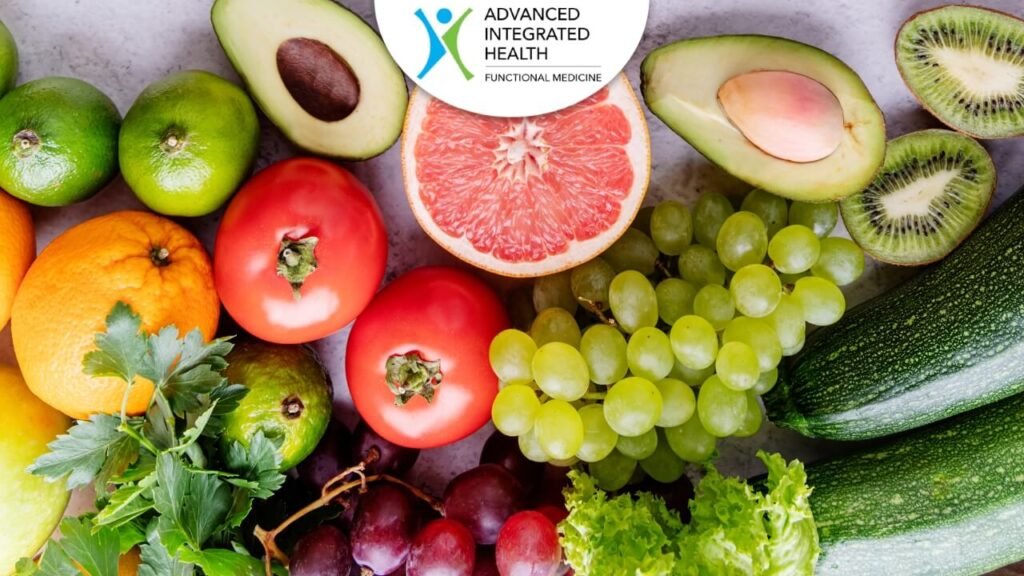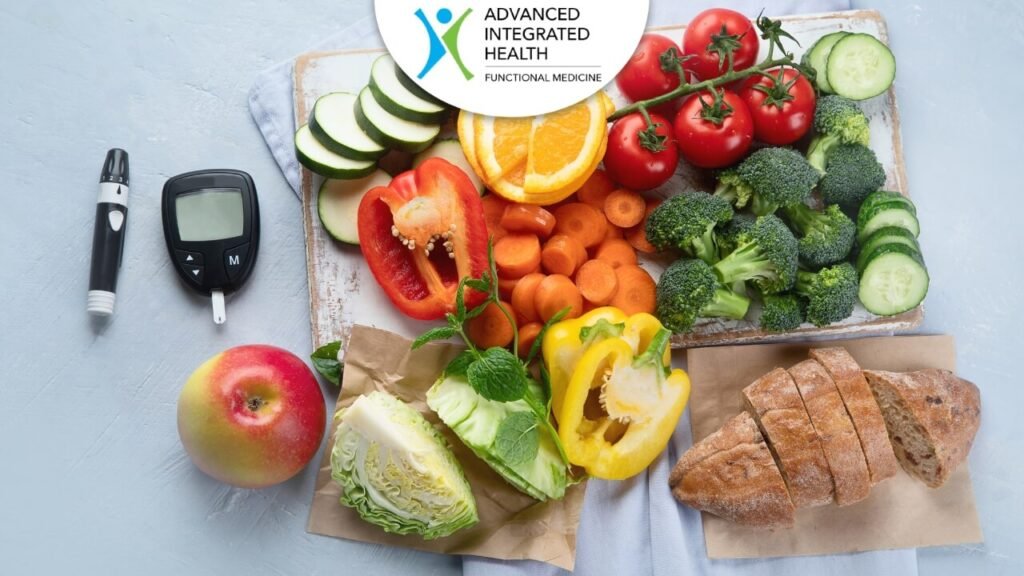Are you recently diagnosed with diabetes and afraid that you would have to sacrifice your joy of snacking? Well, that’s not the case anymore. In fact, choosing the right snacks can help you stabilize blood sugar levels, curb your cravings, and keep your diabetes in check. For diabetics, there is a common misconception that you have to cut back on sugar, but in reality, you have to find balanced snacks packed with the right nutrients that nourish your body without causing blood sugar spikes.
Take an example of snack bars enriched with nuts. A recent review highlighted their benefits for managing diabetes because it showed how nut snack bars can reduce fasting blood sugar levels by up to 11% and lower post-meal blood sugar levels by up to 14%. This guide will explore some of the best snacks for diabetics that will not make you choose between your tastebuds and regulated blood sugar levels.
Understanding Diabetes and Snacking
Eating between meals is not simply about satisfying hunger pangs, particularly for those with diabetes. The right healthy snacks can help ensure that blood sugar levels are stable throughout the day. Snacking is also important because it prevents fluctuations in glucose levels and gives the body a more controlled source of energy.
The key lies in choosing snacks that will guarantee stable blood sugar levels throughout the day. Low glycemic index foods, for instance, those foods containing high amounts of protein, fiber, and the right fats, help to release glucose into the bloodstream slowly. This keeps your blood sugar levels steady and prevents the highs and lows you experience when you take the wrong snacks.
Healthy snacking also supports weight management, which is vital for many diabetics working to manage their condition. Once you know how various foods affect the level of glucose in your blood, you will be able to choose better snacks that will benefit the whole organism.
Get more control over your own health by using the functional laboratory testing offered by Advanced Integrated Health. Assessing your body’s needs is the first step to take towards managing your diabetes properly.
Healthy Snack Options
Snacking is not just an indulgence—it is a practical way of keeping your blood sugar levels balanced and regulated and ensuring that you do not get a surge of blood sugar at any time. If you select properly, you can control the levels of blood sugar, control the gain of weight, and at the same time consume tasty snacks. Here are some really great suggestions for diabetes-friendly snacks that are tasty, healthy, and help regulate blood sugar.
Fresh Fruits and Vegetables
The best diabetes snacks are fresh fruits and vegetables since they help you keep off extra calories and maintain a healthy diet. These are low in calories, high in fiber, and packed with vitamins and all other essential nutrients. Here’s how they can aid blood sugar management:
- Fresh Fruit for Natural Sweetness: Apples, fresh berries, and oranges can be taken as snacks, and they are sweet and healthy, which does not cause fluctuation of blood glucose levels. At the same time, fruit juice contains fructose, and fresh fruits contain fiber that reduces the rate of sugar intake, hence lowering blood sugar levels.
- Vegetables for Volume and Fiber: Fresh vegetables such as cucumbers, cherry tomatoes, and bell peppers are some of the best vegetables because they contain very few carbohydrates and many nutrients. Eat these non-starchy vegetables with hummus to add more flavors and nutrients to your meals.
- Snack Ideas:
- Sliced cucumber with guacamole dip.
- A triangular mixed fruit bowl with fresh berries accompanied by flax seeds.
- Cherry tomatoes will always be a great snack, especially when eaten with cottage cheese on the side.
Adding a variety of colors to your snacks ensures maximum nutritional value while supporting diabetes management.
Protein-Rich Snacks
A protein-rich, delicious and nutritious snack can help you feel full longer and prevent unnecessary blood sugar spikes. Here are a few ideas to satisfy hunger and keep blood sugar control in check:
- Hard-Boiled Eggs: These are the ultimate filling snack; they are sources of proteins and healthy fats. They are very convenient to make and go well with a handful of unsalted nuts or sunflower seeds.
- Cottage Cheese: This is low on the carbohydrate scale, high on protein, and a creamy, diabetes-friendly snack. Include chia seeds or pumpkin seeds in the mixture to add to the nutritive value of the meal.
- Lean Meats and Tuna Salad: Opt for lean meats like chicken slices or make a quick tuna salad for a low-carb, high-protein option. You can also try meat sticks made from lean meats with minimal added sugars.
- Snack Ideas:
- Mix plain yogurt with chia seeds and top with a dash of dark chocolate for an indulgent yet balanced snack.
- Pair cottage cheese with fresh berries for a protein-packed treat.
- Enjoy a handful of seeds and nuts like almonds, sunflower seeds, or pumpkin seeds as a quick snack.
Protein bars can also serve as a convenient option—just ensure they’re made with low-GI foods and have no added sugars.
Whole Grain Crackers with Healthy Fats
Fiber-rich whole grains are also part of the diet, and healthy fats supply the nutrients and energy necessary for the day. Together, they make a very satisfying and healthy snack that is beneficial in regulating blood sugar levels.
- Why Whole Grain Crackers:
- Rich in fibre, which takes time to digest and does not cause any sharp rise in blood sugar.
- Select products with the least amounts of sugar and whole grains as the main component.
- Pair with Healthy Fats:
- Avocado: Packed with monounsaturated fats that help regulate blood sugar levels, which is good for the heart. Mash the Avocado, sprinkle a bit of salt and squeeze a lemon–you have the most delicious and healthy spread ready.
- Peanut Butter or Almond Butter: Offers protein and essential fats; select natural, without added sugar or hidden ingredients.
- Hummus or Guacamole: Both are nutrient-dense and pair well with the crunch of whole-grain crackers.
- Snack Ideas:
- Spread avocado on whole grain crackers and top with a sprinkle of chili flakes.
- Accompany crackers with peanut butter and several slices of bananas as a sweet and salty snack.
- Use hummus as a dip for crackers and sliced vegetables.
Snacking Strategies for Diabetics
Managing Blood Sugar Levels with Snacks
Note that snacking for a diabetic isn’t about hunger satisfaction alone—it’s about the diabetics’ blood sugar levels sustainably. Here are the best strategies for choosing snacks that keep blood sugar levels steady:
-
Opt for Low Added Sugars and Refined Carbs:
Beverages, candy bars, sugar-containing cereals, granola bars with added sugars, cookies, cakes, pies, and other baked products made from refined carbohydrates will prompt a rise in blood glucose. So, it is better to opt for snacks that have natural sweetening products and natural elements added to them. For instance, fresh berries, apples, or pears can give a similar sweetness level to that of candy without the same effect on blood sugar. It is also important to reduce the intake of foods and drinks high in sugar, which are usually empty calories and can lead to the addition of more weight.
-
Focus on High Fiber, Protein, and Healthy Fats:
Fiber reduces the rate at which sugar is absorbed in the blood, which makes it challenging to have high or low blood sugar. Among others, fresh vegetables, whole grain products, legumes etc, are good sources of fiber. Protein and healthy fats also have an important role to play in making you feel full and satisfied. Include hard-boiled eggs, nuts, seeds, chia seeds, sunflower seeds, and lean meats such as chicken or turkey slices to create healthier, stable blood sugar snacks.
-
Be Mindful of Carbohydrates:
Carbohydrates are necessary for the diet, but it is important to control how many you consume to help regulate your blood sugar level. Concentrate on good carbs like whole grains, vegetables, and fruits instead of bad carbs, such as white bread, crackers, and chips. Counting portions of carbs will help prevent periods of high and low blood sugar levels.
-
Stay Hydrated:
Remember that fluid intake is also an important aspect of managing your blood sugar levels. The best way is to always take water when you are thirsty. If you’re in the mood for something different, go for unsweetened iced tea or herbal tea.
Avoiding Common Mistakes
Of course, the key to healthy snacking is knowing which foods to choose, but there are several pitfalls to avoid if you want to maintain normal blood sugar levels. Here’s how to avoid them:
-
Avoid Snacks High in Added Sugars and Refined Carbs:
Snacks that have added sugars can cause your blood sugar to spike rapidly and will make it challenging for you to manage diabetes. Also, stay away from processed food like sweetened yogurts, granola bars with added sugars, and sweetened banana chips. Instead, add unprocessed and whole foods into your diet, like vegetables, fruits, and protein.
-
Avoid Snacks High in Saturated Fats and Sodium:
Processed or pre-packaged snacks contain lots of unhealthy fats and sodium, which can lead to additional weight gain, heart disease, and inflammation. You should avoid crunchy foods, processed foods, and processed baked products. Instead, opt for snacks that contain healthy fats, such as avocado, nuts, and seeds, which are friendly not only to your blood sugar but also to your heart.
-
Don’t Overeat or Rely Too Heavily on Snacks:
Healthy snacks are good but should not be consumed excessively. Snacks between meals should help fill the gaps and reduce overeating, but when consumed in large quantities, they can lead to increased weight and high blood sugar levels. Maintain a proper eating regimen and do not eat between meals because it is not healthy to snack out of boredom.
-
Be Mindful of the Glycemic Index (GI):
The GI is an indicator of how fast a particular food increases blood sugar. High-GI foods, such as white bread or sugary snacks, can raise blood sugar levels sharply. Try to pick snacks with a lower GI. These include non-starchy vegetables, whole grains, and legumes. Low-GI snacks, when accompanied by protein or healthy fat sources, will help maintain stable blood glucose levels and provide sustained energy.
Convenient Snack Options
When life gets busy, and you get overburdened with work and personal commitments, it’s easy to skip a meal and go for an unhealthy snack to satisfy your cravings. But if you plan your meal properly, you will be able to take along diabetic healthy snacks anywhere you go. Here are some easy-to-carry snack ideas that will help keep your blood sugar levels steady:
- Fresh Fruit: Keep sliced apples, bananas, pears, and your favorite berries in a disposable lunch box or Tupperware so you can snack on the go. Fresh fruits will give you a quick energy boost when you feel low without risking a blood sugar spike.
- Nuts and Seeds: To balance the fruits, add nuts like almonds, walnuts, sunflower,s and pumpkin seeds for easy snacking whenever hunger strikes.
- Energy Balls: Make some energy balls at home by combining oats, nuts, seeds, and a bit of natural sweetener like honey or dates for convenient and quick snacking. These balls are full of fiber and make for a satisfying snack.
Conclusion
We know that snacking is a habit that we simply can’t do without, but as a diabetic, there are ways to work your way around it while keeping your blood sugar levels in check. When incorporating these smart snacking strategies, your secret weapon will be fibre-rich fruits and veggies, protein-packed nuts and whole grains that will keep your blood sugar steady while satisfying your snack cravings.
For personalized guidance tailored to your unique health needs, consider consulting with healthcare professionals who specialize in integrated health approaches. At Advanced Integrated Health, we are dedicated to providing comprehensive support for individuals managing diabetes.
References
- Dimopoulou, M., Vareltzis, P., Floros, S., Androutsos, O., Bargiota, A., & Gortzi, O. (2023). Development of a Functional, Acceptable Diabetic and Plant-Based Snack Bar Using Mushroom (Coprinus comatus) Powder. Foods, 12(14), 2702. https://doi.org/10.3390/foods12142702
- Bazzano, L. A., Li, T. Y., Joshipura, K. J., & Hu, F. B. (2008). Intake of fruit, vegetables, and fruit juices and risk of diabetes in women. Diabetes care, 31(7), 1311–1317. https://doi.org/10.2337/dc08-0080
- Imamura, F., Micha, R., Wu, J. H., de Oliveira Otto, M. C., Otite, F. O., Abioye, A. I., & Mozaffarian, D. (2016). Effects of Saturated Fat, Polyunsaturated Fat, Monounsaturated Fat, and Carbohydrate on Glucose-Insulin Homeostasis: A Systematic Review and Meta-analysis of Randomised Controlled Feeding Trials. PLoS medicine, 13(7), e1002087. https://doi.org/10.1371/journal.pmed.1002087
- Daisy Coyle, A. P. D. (2022, September 16). Introduction to the low glycemic diet. https://www.healthline.com/nutrition/low-glycemic-diet

Dr. Bob was born and raised in Florham Park, New Jersey.
He loved the philosophy of vitalism, which teaches about the incredible, innate intelligence of our bodies and its power to self-heal when given the opportunity.




0 Comments